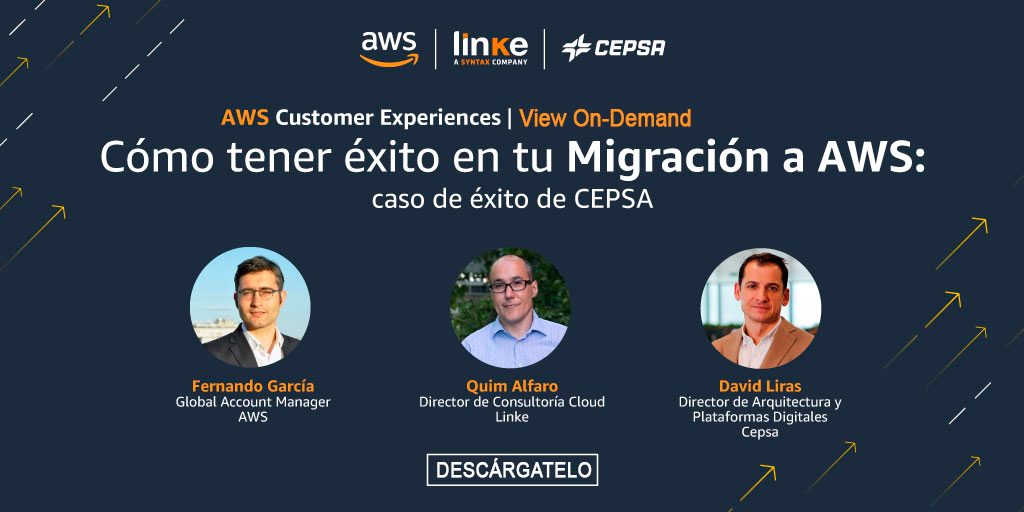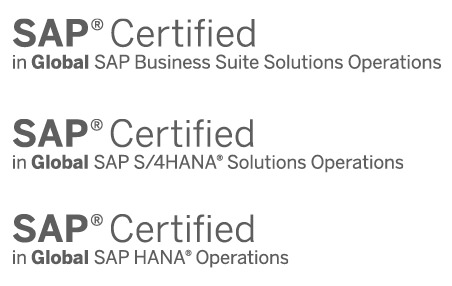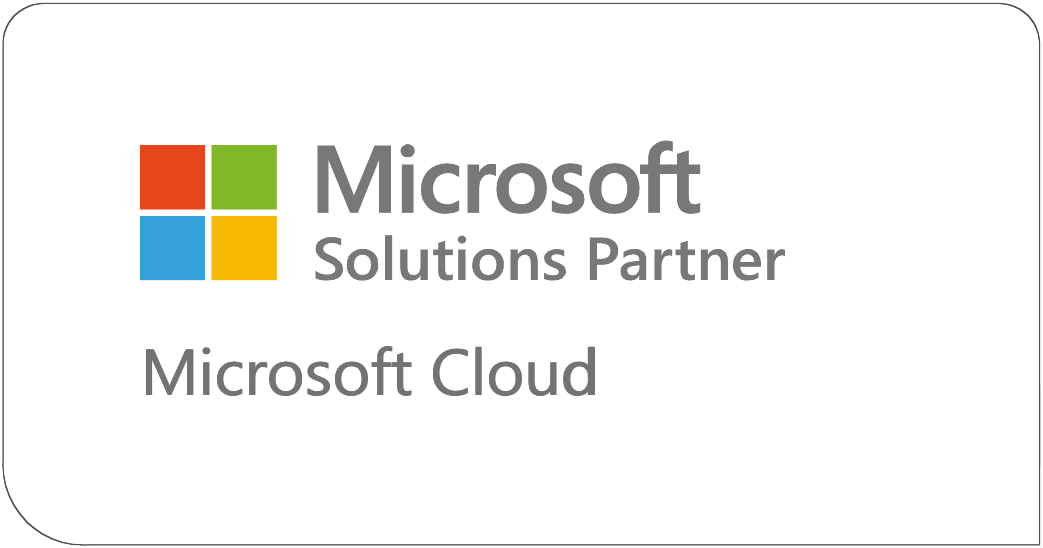How do you carry out a smooth cloud migration project? What is the methodology and best practices that lead to success? This week we answer these questions based on Cepsa’s experience in a project involving Syntax and AWS Professional Services.
The three companies, Cepsa, AWS and Syntax, have teamed up to bring together in a webinar the keys to a successful SAP migration to AWS. In the session, David Liras, Director of Architecture and Digital Platforms at the energy company, Fernando García Pardo, Head of Global Accounts in the energy sector at AWS Iberia, and Quim Alfaro, our Director of Cloud Consulting, explained the key points of a project that has met the objectives set by the Spanish multinational.
When a client migrates a platform to the cloud, it is due to two main reasons, related to its infrastructure: because it has reached the end of its life cycle or because it has reached its maximum capacity, which can limit business growth.
Precisely, as David Liras explained, the technological obsolescence of the servers that were running SAP S/4HANA was one of the reasons why Cepsa migrated its SAP landscapes to AWS in 2020. Although this was its main objective, this global company, with operations on four continents and present in the entire value chain of the Oil & Gas market, wanted to cover more needs:
- Eliminate the dependency of having part of its 12 landscapes consolidated on the same physical infrastructure.
- To standardise the operating systems of the different environments.
- To put an end to the limitations that IT maintenance represented for the timetable changes of a company with a global presence, as they reduce the time available to the teams to carry out these tasks.
- Improve deployment times by taking advantage of automation.
- Create a Disaster Recovery system.
Methodologies and best practices
The methodology that was followed as the basis for the project roadmap was the one provided by the AWS SAP Migration Acceleration Program for SAP, known as SAP MAP, of which Syntax is part.
It consists of three phases and, as Quim Alfaro pointed out, “one destination, which is the maintenance or evolution of IT“. The first stage consists of a validation of the company’s level of readiness for migration, the definition of patterns for carrying out the project and a TCO calculation to estimate what the migration will entail.
The second phase belongs to the project planning, where the necessary resources are mobilised. A migration plan and a detailed business case is created and takes into account factors such as the relocation of workloads and interfaces, integration with other systems, accessibility and the operation of the migrated environments. “We start designing a migration factory, generating the automatisms that will allow us to be much more agile in the execution of the initiative, but it also has to be thought of as an element for subsequent operations,” said the cloud consulting expert.
Then, the third phase is the execution of the migration, preparing the company to maintain the systems and make the transfer from Project to Operations.
In the case of Cepsa, the validation part was quite simple, since, being SAP applications, there are predefined migration patterns and standard architectures. Thus, in line with Cepsa’s requirements, three types of environments were defined: databases, application server and ‘all-in-one’, then the automations were designed to create the infrastructure and configurations to speed up the provision of these environments.
This project started in 2020, almost at the same time as the start of the containment, which increased the complexity of the project, but did not prevent its success.
On the other hand, it was essential for Cepsa to ensure that it was capable of operating all the infrastructure that was being deployed. Therefore, there was both theoretical and practical training, as Cepsa’s operations professionals were included in the development teams and the ones who carried out the deployments to production. “The teams understood each other well and worked in coordination to achieve the objective: to do the migration well and as quickly as possible,” said the Syntax spokesperson.
Benefits achieved
Cepsa has achieved all the objectives, as David Liras pointed out. On the one hand, it has decoupled the applications from the infrastructure and has homogenised the operating systems, as well as covering the rest of the company’s needs and having taken advantage of the opportunity to migrate to SAP HANA 2, which was something that was not initially included in the requirements.
There are also a number of other advantages that have been derived from the project:
- The deployments and configuration of infrastructure as code has not only speeded up the development of the project, but the benefits are being felt in the operation and in other projects that the multinational is tackling.
- Business continuity has been enhanced, with High Availability (HA) in different parts of Ireland, as well as Disaster Recovery (DR) in Frankfurt.
- Significant performance improvements: around 33% for batch processes and 13% for dialogue processes.
Cepsa’s Director of Architecture and Digital Platforms also highlighted that “there was no cost deviation and, today, we have total control of operating costs. The TCO (total cost of ownership) is much more accurate. We have a real-time breakdown of all the services we have, and for each of the accounts.
Why SAP on AWS?
The public cloud platform has almost fourteen years’ experience working with SAP environments, during which time it has had more than 5,000 customers and during which, as Fernando García Pardo explained, “we have been growing by innovating“.
Apart from the flexibility and robustness of the infrastructure, he pointed out that native AWS services provide companies with tools that improve productivity, drive innovation and turn companies into ‘data-deliverers’, and that is important for users of SAP systems.
In addition, the AWS spokesperson stressed the importance of SAP MAP, which is a co-investment from AWS, not only financially, but also provides a set of methodologies and tools that simplify migration projects. Through it, it also makes it easier for customers and partners to ‘upskill’ their customers and partners.
If you want to know more about our cloud migration services, please click on this link.



